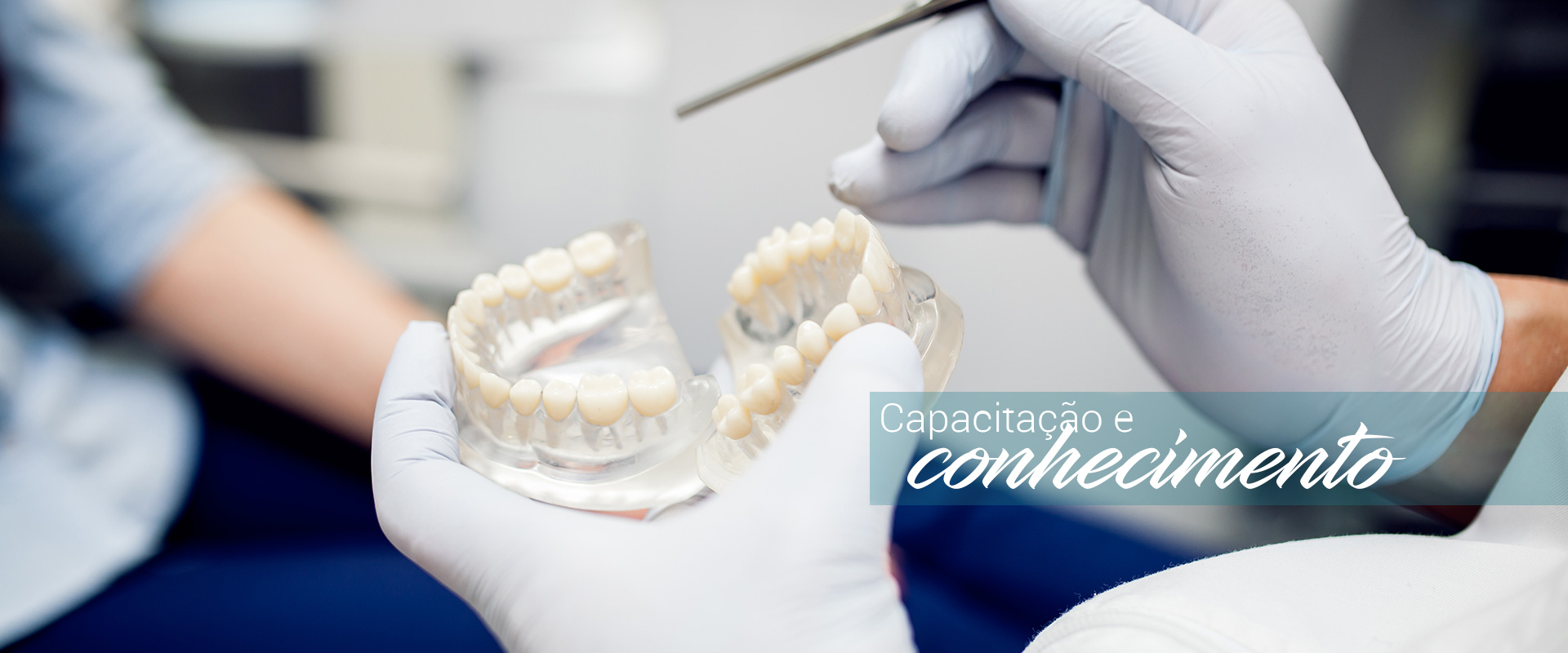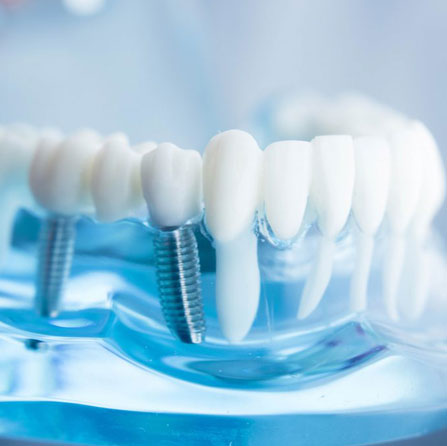
Dental Implants
Titanium cylinders attached to the bone through a surgical procedure for artificial teeth placement. When the prosthesis is placed at the moment or soon after the surgery are called implants with immediate load.
In general, the implant is "buried" inside the gums and, four months later, for Jaw (upper) or two months, for jaw (lower) it is reopened to place the definitive prosthesis.
When in the region there is a very thin layer of bone, verified through 3d tomographic exams and specific software, it is necessary to bone graft before or during implant installation.
The fixation of the implant to the bone is due to osseointegration, which is the intimate union of the new bone to titanium, because there is an organic biocompatibility to titanium.
We have in the market many types of implants, of all prices and quality, national and imported. We prefer the implants imported because of the greater amount of scientific studies aiming at the effectiveness of these models.
The titanium cylinders function as roots for the support of the prosthesis that is to be fixed on them. It can be built in many ways, depending on the planning, number and size of the implants used, the antagonistic type (opposing arcade) and even the economic factor. Contrary to what many think, today there are prosthetics on implants that can be accessible to many people.
In addition to returning the occlusion in a very effective way, the bone-integrated implants also prevent oral bone atrophy, by reducing the speed of bone resorption in the areas of dental avulsions.
The sooner you put the implant after the dental removal, the greater the bone quantity and the better the aesthetic condition. In some cases of root fracture, the immediate placement of the implant and prosthesis (implants with immediate load) will preserve all existing anatomical structure, provided that the fracture is diagnosed early.
Very careful should be taken in the indication of implants for children and adolescents due to growth.
The success rate is very high, about 97%. The success of the implant is dependent on some factors that may vary with the region, quantity, bone quality and physical conditions of the patient.
Patients subjected to dental implants need to have redoubled care with oral hygiene to prevent the formation of plaque on the surface of the implanted tooth. The tissues around the prostheses on the implants can also infect, and in some cases cause peri-implantitis. The treatment of peri-implantitis is much more difficult than dealing with the infection of the tissues surrounding the natural teeth (periodontitis).

Privacity Policy
In respect to our customers this site does not disclose situations such as the "before and after" of the treatment. If there is an interest in treatments that involve aesthetics, dentures, prosthesis on implants, dental implants or bone grafts, we have several cases (case files) with the before and after, documented in the clinic itself, which will be shown to the patient in Evaluation. It is important to note that the clinical cases are individual, so for each situation there is a restorative resolution. The indication of the type of prosthesis and aesthetic resolution for each patient depends on the quantity and quality of the structures available, as well as the organic response to the planning imposed for each case. All the texts of the specialty link are compilations and simplified adjustments of specific articles and books in the area.
Friendliness, professionalism, confidence and agility
